Wherever we go blue light is bound to follow. Blue light is produced by the ever-present LED- Light Emitting Diode. The LED is what illuminates our phones and computer screens, and has now also made it into our homes with LED light bulbs. LED lights are smaller, more efficient and more durable than other lighting so it is no wonder they are all around us. The problem is that the dominant wavelength emitted from LEDs is around 482nm—the blue wavelength of light in the visible light spectrum.
The two big concerns I have with blue light is the higher energy that is packed in those shorter wavelengths and the fact that blue light disrupts or our sleep cycle.
Light comes to our eyes in waves, more precisely electromagnetic waves. The visible spectrum being wavelengths from approximately 380-780 nanometers (1 billionth of a meter). And if you remember your ROY G. BIV, going from longest wavelength to shortest with the “V” as in “Violet” at 380nm. Shorter than 380nm is the dreaded ultraviolet light that we cannot see but contains tremendous energy that causes sunburns and ultimately disruption in DNA that leads to cancerous growths. Because blue light is near that end of the spectrum, we worry about excessive amounts of it reaching the delicate tissues of the eyes. While some studies indicate that blue wavelengths can damage the retina, there has not been any evidence that the blue light emitted from our phones and computers cause long-term damage.

The main reason we recommend blue light protection is due to computer-related eye strain and the disruption blue light has on our circadian rhythm. This has been borne out in research. Blue light emanating from the computer screen has been shown to cause variances in our focusing system. With an eye that is constantly trying to find the right focus, it causes the eyes to fatigue quicker and eye strain during computer use. Exposure to blue light has also been shown to hinder our ability to fall asleep and get needed deep REM sleep, leaving us fatigued and unproductive. The theory is that blue light suppresses melatonin, the hormone that helps regulate sleep. Melatonin not only regulates sleep but is also one of most potent cancer-fighting hormones in the body with a strong appetite for gobbling up free radicals that cause cancerous change.
While the jury is still out on permanent tissue damage from blue light, I believe there is enough evidence that blue light can be harmful to sleep thus affecting your overall systemic health.
To prevent sleep disruption from blue light you can try to avoid using digital devices especially before bedtime, but lenses or coatings that filter the light solve the problem.
We recommend blue light protection with DuraVision® BlueProtect from Zeiss for our heavy computer users especially if they are using digital devices before bedtime.











